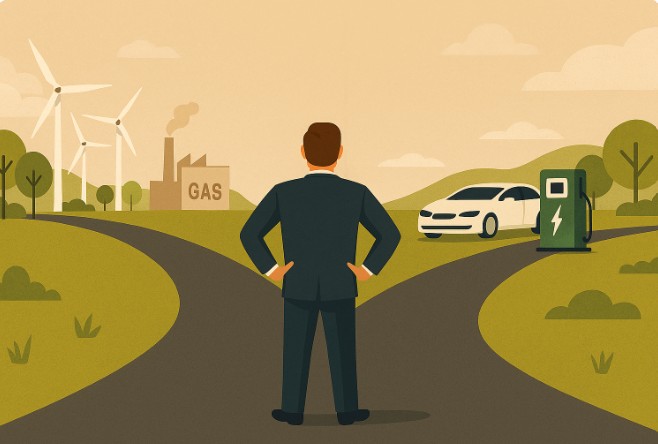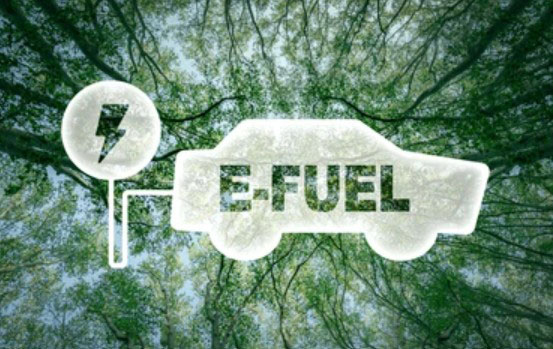February 22, 2021
Based on headlines, the fast approaching death of the internal combustion engine is upon us. In addition, governments around the world have announced end dates for phasing out internal combustion engine vehicles. What are the motivating factors involved? Will electric vehicles be the sole long-term solution to reducing transportation-related carbon emissions? Jason Stein, vice president and publisher with Automotive News, joined us and provided additional global context, as well as the potential effects on consumers.
Transcript
John Eichberger: Hey, everybody. Welcome to carpool chats. My name is John Eichberger with the Transportation Energy Institute. And today we are really pleased to have Jason Stein, the publisher of Automotive News with us. And we’re going to be talking about this trend of banning the sales of internal combustion engines, that seems to be gaining traction in governments across the world. So, Jason, thank you very much for joining us today.
Jason Stein: Great to be with you, John. Thank you.
John Eichberger: We’ve got a great relationship with Automotive News for a couple of years now, and I’m really glad that you’re here. You guys have a really good thumb on the pulse of what’s going on in the market. So let’s just open it up. Last year, we had a flurry of activity. Early in the year, you had UK prime minister, Boris Johnson saying they’re going to accelerate their proposed ban on combustion engine sales from 2040 to 2035. Governor Newsom in California announced the ban on sales of internal machines by 2035. Quebec jumped into 2035, Boris Johnson one up to everybody went to 2030. What seems to be the motivating factor here? And what’s really going on with this? I mean, seems to be like, everybody’s trying to get their licks into this.
Jason Stein: Yeah, really, John, the age of the internal combustion engine is effectively over if you read some of the headlines. Electric cars are definitely the future. You’ve seen a lot of announcements come even just in the last couple of weeks, primarily from General Motors saying that they’re going to phase out ICEs eventually as well. And that transition has really just begun and it’s started several years ago when the EU really committed to having a cleaner greener future. And you saw the rapid acceleration of so many other member countries that followed. And part of that is obviously behind a movement to reduce congestion, to reduce smog. But the issue in the auto industry is of course you have global sales. And when the EU says something en mass, or if China says something en mass, you know that what’s going to happen following that is the platform developments. The products that are in the pipeline all have to follow because of the long lead time in terms of getting those products developed. So when you talk about a 2035 timeframe, you’re probably talking about a 2026 timeframe. Because the phase out, or the development of some of the new products that are coming certainly will require the kind of planning, the kind of execution that the auto industry has been known for for a long time. But now has to do at a very different level with a completely different set of circumstances. And you sort of hit on it, but when you go around the world, we can talk about Iceland in 2030, we can talk about Scotland in 2032, the UK in 2035. And it just cascades throughout Europe and China at this point is saying basically 2030. So electric is going to happen soon. It’s going to happen quicker than probably most people suspect. And there are a lot of driving forces around it.
John Eichberger: You mentioned, a lot of countries that are really small. And I remember a couple of years ago when London and Paris both said, “We’re going to get rid of combustion engines by 2040.” I got a lot of calls, I say, I’m not really concerned, I mean, they represent less than 5% of the global market and the policies were 20 year perspective targets. How many administrations are going to change hand in those two cities over the 20 years? And then China stepped up said, “You know what? We’re going to ban combustion engine sales too.” And I woke up that’s 25-30% of the global auto market. They have a president for life. When they want to do something, they can do it. And so as these announcement started percolating last year, I took a closer look and more than 50% of the global auto market is thinking about doing something along these lines. I mean, I had the question, is it viable? Is it realistic? Are we going to see these bans put in place? Or are they more aspirational targets? I mean, from your perspective, what do you thinks going to happen? Because you said 2025, 2026 is when you got to start turning things over, and that’s right around the corner. And that’s not a long lead line.
Jason Stein: Now let’s even look at a more real-world example and take Austria. They’re going to phase out registration of new gas vehicles by 2027. So, you’re just talking about, I mean, in reality, a handful of years from now, right? To answer your question. I think when China says that China is going to ban ICEs, China is going to ban ICEs. As the world’s largest car market right now that really was driving, even beyond the EU’s efforts, was driving automaker intentions here because they knew that they needed to serve and service the number one car market in the world. And some of that will be a little bit more, I would say, dictatorial in its approach, not a political statement, but just in-
John Eichberger: In reality.
Jason Stein: Yeah right, reality. And others, I mean, when you look at the UK and whether it’s Ireland that wants to phase out zero emission vehicles starting in 2030. Or as you mentioned, other member EU countries, Germany, for example. The upper house of the legislature had already passed a resolution to only approve emission free cars for use on the roads by 2030. Those are pretty serious I think. How viable is it? I’m not sure. And I know we’re probably going to talk about the consumer here, but putting these in place will force certain type of behavior and the consumers right now aren’t really there.
John Eichberger: Yeah, and I think domestically in the United States, I’m skeptical that a federal ban on combustion engine sales will get the votes it needs to pass, even though legislation was introduced last year. And I think I heard some of that one of the Senate leaderships in the democratic party said, “Maybe we need to think about this.” And clearly president Biden’s dedicated to reducing emissions from the transportation sector, which is a laudable objective. I don’t see it happening here in the United States, just because the political makeup. However, I mean, there’s a lot of momentum, California, I think Massachusetts, New Jersey, are all looking at this. So in a piecemeal approach can be a little dangerous. Now the Fuel Institute, so we pulled together a task group started looking. Okay, assume you go forward with a ban on combustion engines. What are the considerations for the market, for stranded assets, for displaced workers, for consumers that need to be thought about when you’re going through this? Because the tail on these things is huge. It’s not just making a switch to a powertrain. It is changing an entire ecosystem that affects millions and millions of people. So when you think about this, what do we expect a consumer reaction might be? What can we expect in these countries that are definitely going forward with this and possibly in states in the United States, what might we expect to see happen as these things are implemented?
Jason Stein: Well, I think you just touched on a number of facets that need to be considered as it relates to the transition, because we are built right now for an internal combustion engine world. There are gas stations on every corner. There is not charging on every corner. There is a heavy infrastructure requirement that needs to be met and it’s happening, but it’s happening slowly. And obviously Volkswagen being one of the key proponents for electric infrastructure, the implementation of it, at least as has been rolling out, they have a vested interest. They also have an obligation because of what happened with the diesel gate scandal around the world. I think you’re going to see smaller EU countries adopting increased infrastructure on a regular basis. And I think some US states will also start to implement those kinds of measures which will lead to obviously displacement on the ICE jobs, but proactivity on new skills. The electric infrastructure, the grid that will need to be fortified will create new jobs in that way. Let’s get to the consumer though. Let me use January as an example. In January, one premium German automaker, which is selling a very exciting new product, you can guess who this might be.
John Eichberger: It’s an exciting product. That’s for sure.
Jason Stein: Sold a total of around 50 units of their new hot product from North Dakota down to Texas, that central region. 50 cars, I mean, this is a rounding error. Clearly the consumer isn’t there yet. And there’s a heavy marketing push. You saw that during the super bowl toward EVs towards electric. Maybe they’ll get there, but it’s going to require a lot of money. And even when you look at Volkswagen’s rollout of the ID4, which is coming right around now. The issue is the price point only comes down after federal rebates are put in place. So, that $7,500 credit. Will the credits be there? Will there be money towards this? Possibly, could be. But a lot needs to happen before the consumer comes along for the ride.
John Eichberger: One of the things that concerns me about the push towards electrified vehicles, and it came through our task group’s discussion is equity and environmental energy justice. How do we make sure that lower income consumers or even rural communities have adequate affordable access to transportation energy? If you ban combustion engine sales, most of the lower income population relies on the used car market to acquire their vehicles.
Jason Stein: It’s true.
John Eichberger: What’s going to happen to the residual value of combustion engine and the used car market. Is it going to go up as the volume of those cars go down? How has the EV market used car market going to develop and will they continue to have access or will they just be forced to hold onto their older, less efficient vehicles for longer? And that’s something we’ve got to think about.
Jason Stein: I think your last statement really hits to it. You’re going to see a car park that’s going to be very bifurcated for a long time. Because you’re going to see vehicles that are already on the road, stay on the road for a while to the points that you just mentioned. But also there are those, the early adopters we’ve seen them already who will jump into the latest and greatest electric vehicle on the market. But it’s really unknown right now what happens to the used side of the electric vehicle market? We don’t know how governments are going to handle them. One thing that we don’t talk about is battery disposal. It’s one of those issues that sort of is out there that doesn’t get addressed on a regular basis. Battery disposal is a key piece of this. Battery supply is also a key piece of this. We’re in the wild west, if you will, for the electric vehicle side of the business. And by the way, it does kind of look like a hundred years ago with all of the new players that are now coming into the market. The Lucid’s of the world, the Rivians of the world, there are a lot of startups backed by enormous amounts of capital and specs who are really trying to find their footing in this. Kind of reminiscent of the 1920s.
John Eichberger: The other thing that concerns me, and even if we ban combustion engine sales by a certain date, we’re going to have combustion engine and liquid fuels on the market for the next 50 years. And one of my biggest concerns that we need to address emissions from all transportation options, not just wait for zero-emission vehicles to dominate the market. If we are putting all of our eggs in one basket, are we depriving the combustion and liquid fuels market from the research necessary to improve its environmental perception? And to reduce the emissions from that legacy system that’s going to be here for the next 50 years? I mean I don’t think it’s possible or feasible practical to say, “Okay, we’re going to just ignore 260 million vehicles in the United States and just wait for the white horse to come through.” We have to continue and make these incremental improvements in that sector. And I’m really concerned that if we are focusing all of our policies to phase those out, what’s the incentive to invest in improvements in that technology anymore?
Jason Stein: It’s a fair point. And I think, like with anything, there needs to be some balance here, right? We can’t go headstrong into one side of this. I want to go back to one of the earlier points you made and that’s executives coming out right now. Not countries executives at car companies coming out and saying, “That’s it, we’re putting everything into this basket.” And back to another point that you made to most of those executives, well perhaps all of them, won’t be around when this legislation, or when these proclamations take place. I think there’s going to be a lot of movement between now and then. Yes, is it environmentally conscious, or is it progressive, or does wall street like what you’re saying when you declare that 15 years from now that that your fleet is going to look completely different? A hundred percent, there will be a balance on the way there.
John Eichberger: The auto company announcements, I kind of look at them from a couple different perspectives. One is, you’ve got one elective vehicle automaker has 75% market share and their valuation is through the roof. Yet, I don’t think they have the manufacturing capacity to compete en mass with a volumetric production capabilities of the established OEMs. And I think the established OEMs are saying, “We’re going to get into this are looking you know what? We’re going to take that valuation back. We’re going to reinvigorate our company and we’re going to make sure that we’re relevant. And we’re going to recapture our leadership role on this.” I think that’s one big thing. The other big thing that I think is really driving a lot of this, is the whole environment social governance pressure. You’ve got these large investment firms saying, “We’re not going to direct any money to corporations that don’t have a solid carbon mitigation plan.” And no matter how big of an automaker you are, you have to pay attention to that. You’ve got shareholder advocacy, you’ve got the investment housing, you’ve got the government looking at you. Everybody’s looking at you saying, “What are you doing next?” And you better step up, otherwise, we’re going to regulate you, we’re going to deprive you of access to capital. That is a huge motivator for these companies to say, “All right we’re all in, and here’s our plan.” And I think, if you think about it that way, it makes perfect sense they’re making these announcements.
Jason Stein: Yeah, what I wouldn’t count out here though, is the influence of the oil and gas sector and the enormous lobby that it has. These guys are not going to go quietly into the night. And just look at the success that sector has had in America related to fracking over the course of the last 10 years. Again, another industry that will not sit quietly by and say, “Well electrics the future. I’m not sure what we’re going to do next.”
John Eichberger: That’s absolutely right. I mean, you’ve got some of the major oil companies saying, “Yeah, we’re diversifying our portfolio.” And they need to do that. But the other thing here is, if left to our own devices and we’re going to wait for consumers to make the transition to electric vehicles, $2 gasoline does not help the EV market. And when consumers are paying a price at the pump that doesn’t concern them, it doesn’t cause them to go, “Whoa, I’m paying too much.” They really don’t shop around. And unless the EVs are front and center everywhere for them to look, touch, feel, smell, and experience, they’re not going to go out of the way of looking for something different. And I think that’s one of the reasons why you have so many of the EV advocates, who think EVs are the ultimate solution saying we have to do something more aggressive to force the change, because if we’re going to let the consumer make the decision, we’re going to be sitting here and waiting a very long time and we’re not willing to do that.
Jason Stein: No, no, exactly. Because, look at how long we’ve been talking about, say the Nissan Leaf. And of course, range was an issue when it was first launched. And there are, by the way, a lot of other related issues that need to be considered as we talk about the proliferation of EVs. One issue that nobody talks about is hurricanes in South Florida, or in South Texas, or in South Louisiana that knocks a grid out. I’m not sure what happens then when that occurs.
John Eichberger: And they’re the things we have to think about. You have to look at the grid resiliency, you have to look at transmission reliability. We have to look at the renewable portfolio of the generation capacity to make sure that the electricity we’re using is cleaner than the gasoline we’re replacing. There’s just so many complex collateral issues that need to be considered when you’re thinking about something, this significant. I’m a strong believer that EVs are going to have a major role in our transportation sector very soon. I don’t know that they’re the long-term ultimate solution. I think there’s so much research being put into transportation that new ideas and new concepts need to be given proper consideration because maybe they actually offer something better. But we can’t close the door to those because once we do that, then we’re locked in and you can maybe it stuck with a substandard solution.
Jason Stein: Well, and look at the fact that some administrations have put in very high barriers in terms of average fuel fleet economy rankings. That, once lowered, with a different administration or backed off, these product programs are already well on their way. And you can’t turn it around. And so, this is part of the reason why we’re here and why we’re doing this now. And so if you put a stake in the ground and say, “Well, 15 years from now, this is the way it’s going to look.” As I said at the outset, “Just know that in the next six or seven years, you’ve got to get working on those programs.”
John Eichberger: Right. Well, Jason, thank you so much for joining us. If people want to know more about what you guys are doing, where can they find information from automotive news?
Jason Stein: Sure. www.autonews.com
John Eichberger: It’s pretty simple, isn’t it? All right, thank you very much for joining us. Thank you for tuning into carpool chats. Hope it was informative and let’s keep our eye on the prize. Keep focusing on what our options are because there are a lot of options to reduce the carbon intensity of our transportation. And we need to be open to all of them and to find the solutions that make the most sense. So, keep thinking about it, keep being critical about the things you’re seeing and thinking for yourself and trying to figure out what the proper solution is. Thanks for tuning in, we’ll see you next time on carpool chats.





